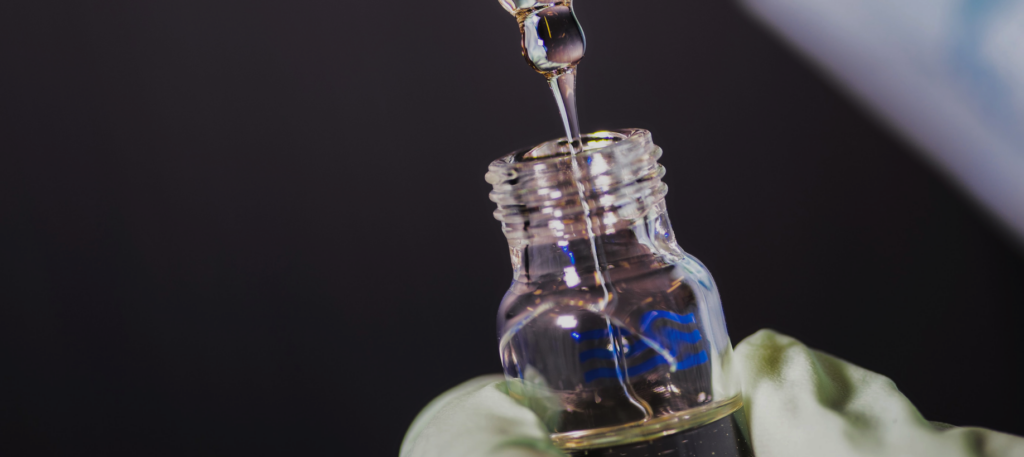Raveendran, A V et al. “Long COVID: An overview.” Diabetes & metabolic syndrome vol. 15,3 (2021): 869-875. doi:10.1016/j.dsx.2021.04.007
Carfì, Angelo et al. “Persistent Symptoms in Patients After Acute COVID-19.” JAMA vol. 324,6 (2020): 603-605. doi:10.1001/jama.2020.12603
Forte, Giuseppe et al. “COVID-19 Pandemic in the Italian Population: Validation of a Post-Traumatic Stress Disorder Questionnaire and Prevalence of PTSD Symptomatology.” International journal of environmental research and public health vol. 17,11 4151. 10 Jun. 2020, doi:10.3390/ijerph17114151
Jiang Hj, Nan J, Lv Zy, Yang J. Psychological impacts of the COVID-19 epidemic on Chinese people: Exposure, post-traumatic stress symptom, and emotion regulation. Asian Pac J Trop Med 2020;13:252-9
Lipov, Eugene G et al. “A unifying theory linking the prolonged efficacy of the stellate ganglion block for the treatment of chronic regional pain syndrome (CRPS), hot flashes, and posttraumatic stress disorder (PTSD).” Medical hypotheses vol. 72,6 (2009): 657-61. doi:10.1016/j.mehy.2009.01.009
Moon HS, Chon JY, Lee SH, Ju YM, Sung CH. Long-term Results of Stellate Ganglion Block in Patients with Olfactory Dysfunction. Korean J Pain. 2013;26(1):57-61. doi:10.3344/kjp.2013.26.1.57
Barizien, N., Le Guen, M., Russel, S. et al. Clinical characterization of dysautonomia in long COVID-19 patients. Sci Rep 11, 14042 (2021). https://doi.org/10.1038/s41598-021-93546-5
Dani, Melanie et al. “Autonomic dysfunction in ‘long COVID’: rationale, physiology and management strategies.” Clinical medicine (London, England) vol. 21,1 (2021): e63-e67. doi:10.7861/clinmed.2020-0896
Lipov, Eugene G et al. “Stellate ganglion block improves refractory post-traumatic stress disorder and associated memory dysfunction: a case report and systematic literature review.” Military medicine vol. 178,2 (2013): e260-4. doi:10.7205/MILMED-D-12-00290
Lynch, James H. “Stellate ganglion block treats posttraumatic stress: An example of precision mental health.” Brain and behavior vol. 10,11 (2020): e01807. doi:10.1002/brb3.1807
Summers, Mary R, and Remington L Nevin. “Stellate Ganglion Block in the Treatment of Post-traumatic Stress Disorder: A Review of Historical and Recent Literature.” Pain practice : the official journal of World Institute of Pain vol. 17,4 (2017): 546-553. doi:10.1111/papr.12503
Mulvaney, Sean W et al. “Stellate ganglion block used to treat symptoms associated with combat-related post-traumatic stress disorder: a case series of 166 patients.” Military medicine vol. 179,10 (2014): 1133-40. doi:10.7205/MILMED-D-14-00151
“How SGB Works.” Stella Center, https://stellacenter.com/.
Tian, Ying et al. “Effective Use of Percutaneous Stellate Ganglion Blockade in Patients With Electrical Storm.” Circulation. Arrhythmia and electrophysiology vol. 12,9 (2019): e007118. doi:10.1161/CIRCEP.118.007118
Datta, Rashmi et al. “A study of the efficacy of stellate ganglion blocks in complex regional pain syndromes of the upper body.” Journal of anaesthesiology, clinical pharmacology vol. 33,4 (2017): 534-540. doi:10.4103/joacp.JOACP_326_16
Liu LD, Duricka DL. Stellate ganglion block reduces symptoms of Long COVID: A case series. J Neuroimmunol. 2022;362:577784. doi:10.1016/j.jneuroim.2021.577784
Moon HS, Chon JY, Lee SH, Ju YM, Sung CH. Long-term Results of Stellate Ganglion Block in Patients with Olfactory Dysfunction. Korean J Pain. 2013;26(1):57-61. doi:10.3344/kjp.2013.26.1.57
Carr, Anitra C, and Silvia Maggini. “Vitamin C and Immune Function.” Nutrients vol. 9,11 1211. 3 Nov. 2017, doi:10.3390/nu9111211
Halliwell, B. “Antioxidants in human health and disease.” Annual review of nutrition vol. 16 (1996): 33-50. doi:10.1146/annurev.nu.16.070196.000341
Bae, Minkyung, and Hyeyoung Kim. “Mini-Review on the Roles of Vitamin C, Vitamin D, and Selenium in the Immune System against COVID-19.” Molecules (Basel, Switzerland) vol. 25,22 5346. 16 Nov. 2020, doi:10.3390/molecules25225346
Hoang, Ba X et al. “Possible application of high-dose vitamin C in the prevention and therapy of coronavirus infection.” Journal of global antimicrobial resistance vol. 23 (2020): 256-262. doi:10.1016/j.jgar.2020.09.025
Fritz, Heidi et al. “Intravenous Vitamin C and Cancer: A Systematic Review.” Integrative cancer therapies vol. 13,4 (2014): 280-300. doi:10.1177/1534735414534463
Klaunig, James E. “Oxidative Stress and Cancer.” Current pharmaceutical design vol. 24,40 (2018): 4771-4778. doi:10.2174/1381612825666190215121712
Pignatelli, Pasquale et al. “Oxidative stress and cardiovascular disease: new insights.” Kardiologia polska vol. 76,4 (2018): 713-722. doi:10.5603/KP.a2018.0071
Wood, Emily et al. “Role of mitochondria, oxidative stress and the response to antioxidants in myalgic encephalomyelitis/chronic fatigue syndrome: A possible approach to SARS-CoV-2 ‘long-haulers’?.” Chronic diseases and translational medicine vol. 7,1 (2021): 14-26. doi:10.1016/j.cdtm.2020.11.002
Vollbracht, Claudia, and Karin Kraft. “Feasibility of Vitamin C in the Treatment of Post Viral Fatigue with Focus on Long COVID, Based on a Systematic Review of IV Vitamin C on Fatigue.” Nutrients vol. 13,4 1154. 31 Mar. 2021, doi:10.3390/nu13041154
Pierce, Janet D et al. “Post-COVID-19 Syndrome.” Nursing research, 10.1097/NNR.0000000000000565. 12 Oct. 2021, doi:10.1097/NNR.0000000000000565
Miller, R et al. “COVID-19: NAD+ deficiency may predispose the aged, obese and type2 diabetics to mortality through its effect on SIRT1 activity.” Medical hypotheses vol. 144 (2020): 110044. doi:10.1016/j.mehy.2020.110044
Braidy, Nady, and Yue Liu. “NAD+ therapy in age-related degenerative disorders: A benefit/risk analysis.” Experimental gerontology vol. 132 (2020): 110831. doi:10.1016/j.exger.2020.110831
Johnson, Sean, and Shin-Ichiro Imai. “NAD + biosynthesis, aging, and disease.” F1000Research vol. 7 132. 1 Feb. 2018, doi:10.12688/f1000research.12120.1
Rajman, Luis et al. “Therapeutic Potential of NAD-Boosting Molecules: The In Vivo Evidence.” Cell metabolism vol. 27,3 (2018): 529-547. doi:10.1016/j.cmet.2018.02.011
Forcados, Gilead Ebiegberi et al. “Metabolic Implications of Oxidative Stress and Inflammatory Process in SARS-CoV-2 Pathogenesis: Therapeutic Potential of Natural Antioxidants.” Frontiers in cellular and infection microbiology vol. 11 654813. 26 May. 2021, doi:10.3389/fcimb.2021.654813
Altay, Ozlem et al. “Combined Metabolic Activators Accelerates Recovery in Mild-to-Moderate COVID-19.” Advanced science (Weinheim, Baden-Wurttemberg, Germany) vol. 8,17 (2021): e2101222. doi:10.1002/advs.202101222
Tan, Arnold, and Craig L Doig. “NAD+ Degrading Enzymes, Evidence for Roles During Infection.” Frontiers in molecular biosciences vol. 8 697359. 16 Aug. 2021, doi:10.3389/fmolb.2021.697359
Dantoft, Widad et al. “Metabolic Regulators Nampt and Sirt6 Serially Participate in the Macrophage Interferon Antiviral Cascade.” Frontiers in microbiology vol. 10 355. 4 Mar. 2019, doi:10.3389/fmicb.2019.00355
Brenner, C. “Viral infection as an NAD+ battlefield.” Nat Metab (2022). https://doi.org/10.1038/s42255-021-00507-3
Heer, Collin D et al. “Coronavirus infection and PARP expression dysregulate the NAD metabolome: An actionable component of innate immunity.” The Journal of biological chemistry vol. 295,52 (2020): 17986-17996. doi:10.1074/jbc.RA120.015138
Katrina Bogan-Brown, Yasmeen Nkrumah-Elie, Yusrah Ishtiaq, Philip Redpath & Andrew Shao (2021) “Potential Efficacy of Nutrient Supplements for Treatment or Prevention of COVID-19.” Journal of Dietary Supplements, DOI: 10.1080/19390211.2021.1881686
Altay, Ozlem et al. “Combined Metabolic Activators Accelerates Recovery in Mild-to-Moderate COVID-19.” Advanced science (Weinheim, Baden-Wurttemberg, Germany) vol. 8,17 (2021): e2101222. doi:10.1002/advs.202101222
National Library of Medicine (U.S.). (2020, October – ). Pilot Study Into LDN and NAD+ for Treatment of Patients With Post-COVID-19 Syndrome. Identifier NCT04604704. https://clinicaltrials.gov/ct2/show/NCT04604704
Popowski, Kristen et al. “Exosome therapeutics for lung regenerative medicine.” Journal of extracellular vesicles vol. 9,1 1785161. 29 Jun. 2020, doi:10.1080/20013078.2020.1785161
Muthu, Sathish et al. “Exosomal therapy-a new frontier in regenerative medicine.” Stem cell investigation vol. 8 7. 2 Apr. 2021, doi:10.21037/sci-2020-037
Lee, Changjin et al. “Exosomes mediate the cytoprotective action of mesenchymal stromal cells on hypoxia-induced pulmonary hypertension.” Circulation vol. 126,22 (2012): 2601-11. doi:10.1161/CIRCULATIONAHA.112.114173
Panagiotou, Nikolaos et al. “Extracellular Vesicles, Ageing, and Therapeutic Interventions.” Cells vol. 7,8 110. 18 Aug. 2018, doi:10.3390/cells7080110
Di Matteo, B et al. “Minimally Manipulated Mesenchymal Stem Cells for the Treatment of Knee Osteoarthritis: A Systematic Review of Clinical Evidence.” Stem cells international vol. 2019 1735242. 14 Aug. 2019, doi:10.1155/2019/1735242
Sengupta, Vikram et al. “Exosomes Derived from Bone Marrow Mesenchymal Stem Cells as Treatment for Severe COVID-19.” Stem cells and development vol. 29,12 (2020): 747-754. doi:10.1089/scd.2020.0080
Ren, Jinxuan et al. “Mesenchymal Stem Cells and their Exosomes: Promising Therapeutics for Chronic Pain.” Current stem cell research & therapy vol. 14,8 (2019): 644-653. doi:10.2174/1574888X14666190912162504
Hade, Mangesh D et al. “Mesenchymal Stem Cell-Derived Exosomes: Applications in Regenerative Medicine.” Cells vol. 10,8 1959. 1 Aug. 2021, doi:10.3390/cells10081959
Bakhtyar, Nazihah et al. “Acellular Gelatinous Material of Human Umbilical Cord Enhances Wound Healing: A Candidate Remedy for Deficient Wound Healing.” Frontiers in physiology vol. 8 200. 4 Apr. 2017, doi:10.3389/fphys.2017.00200
Shabbir, Arsalan et al. “Mesenchymal Stem Cell Exosomes Induce Proliferation and Migration of Normal and Chronic Wound Fibroblasts, and Enhance Angiogenesis In Vitro.” Stem cells and development vol. 24,14 (2015): 1635-47. doi:10.1089/scd.2014.0316
Zhang, Jieyuan et al. “Exosomes released from human induced pluripotent stem cells-derived MSCs facilitate cutaneous wound healing by promoting collagen synthesis and angiogenesis.” Journal of translational medicine vol. 13 49. 1 Feb. 2015, doi:10.1186/s12967-015-0417-0
Bazdyrev, Evgeny et al. “Lung Fibrosis after COVID-19: Treatment Prospects.” Pharmaceuticals (Basel, Switzerland) vol. 14,8 807. 17 Aug. 2021, doi:10.3390/ph14080807
Udwadia, Zarir F et al. “Post-COVID lung fibrosis: The tsunami that will follow the earthquake.” Lung India : official organ of Indian Chest Society vol. 38,Supplement (2021): S41-S47. doi:10.4103/lungindia.lungindia_818_20
Bernardo, Maria Ester, and Willem E Fibbe. “Mesenchymal stromal cells: sensors and switchers of inflammation.” Cell stem cell vol. 13,4 (2013): 392-402. doi:10.1016/j.stem.2013.09.006
Mitrani, Maria Ines et al. “Treatment of a COVID-19 long hauler with an amniotic fluid-derived extracellular vesicle biologic.” Respiratory medicine case reports vol. 34 (2021): 101502. doi:10.1016/j.rmcr.2021.101502
“Direct Biologics Receives FDA Approval to Proceed with Second ExoFlo IND for Post-Acute COVID-19 Syndrome and Chronic Post-COVID-19 Syndrome.” Direct Biologics. June 9, 2021. https://directbiologics.com/direct-biologics-receives-fda-approval-second-exoflo-ind-for-post-acute-covid-19/. Date Accessed: January 12, 2022.
 Our peptide therapy program features a wide range of peptides designed to help you regulate biological processes so that you can feel your best.
Our peptide therapy program features a wide range of peptides designed to help you regulate biological processes so that you can feel your best. Our doctor-guided program features nutritional counseling, full-body composition scans & weight loss medication.
Our doctor-guided program features nutritional counseling, full-body composition scans & weight loss medication.
